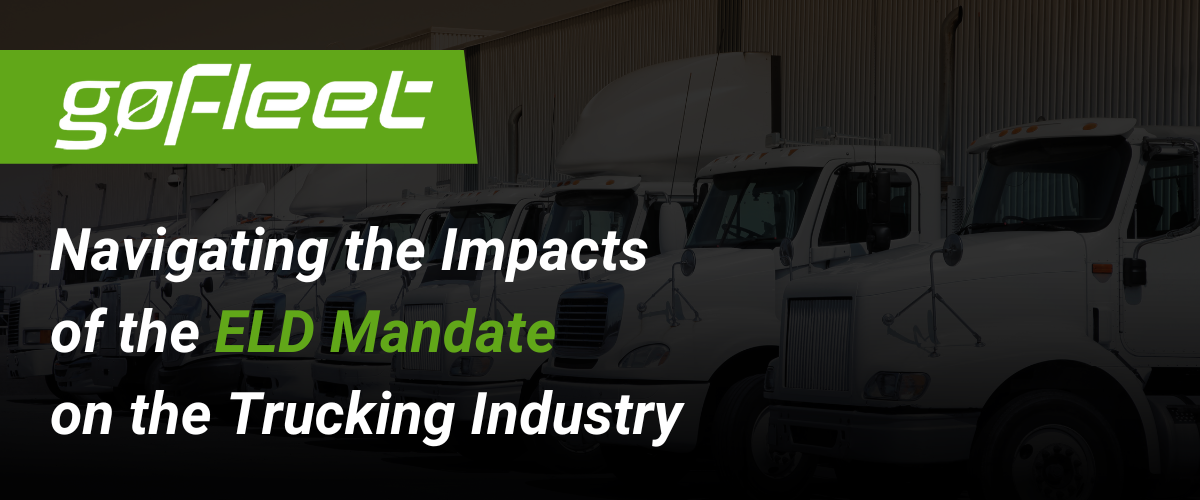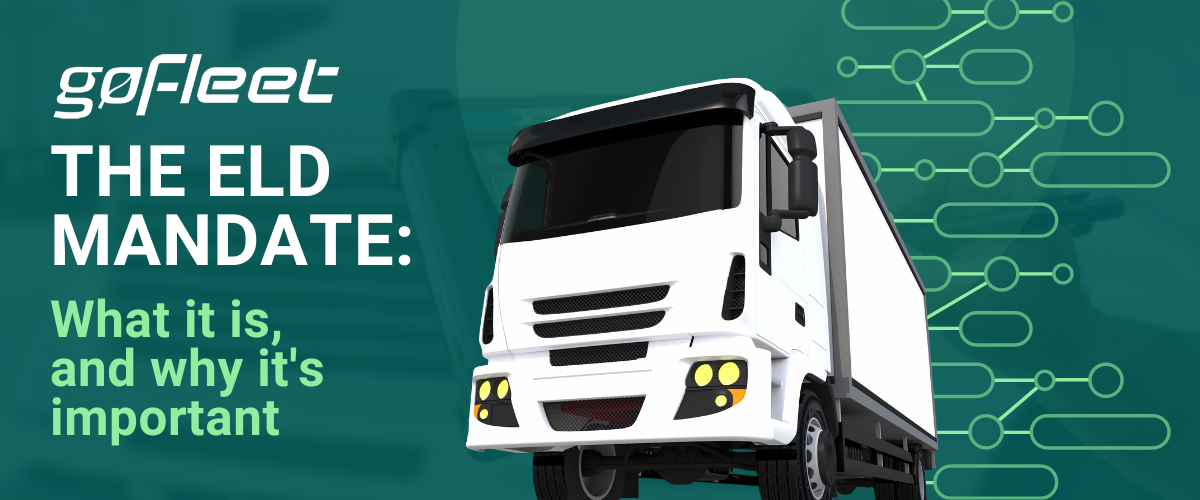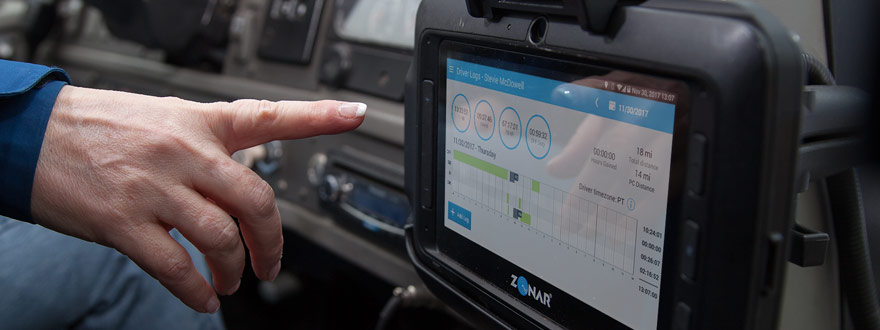In today’s globalized world, transportation and logistics are critical components of many businesses’ success. In 2019, the global fleet management market size was valued at $22.8 billion and is projected to reach $46.6 billion by 2027, growing at a CAGR of 9.7% from 2020 to 2027. As companies seek to optimize their fleet operations, fleet vehicle tracking systems have become increasingly important tools for managing their assets.
These systems use a combination of GPS, telematics, and other technologies to monitor the location, speed, and behavior of vehicles in real-time. This information can be used to improve safety, reduce fuel costs, optimize routes, and enhance customer satisfaction. In fact, companies using fleet management technologies have seen a 13.2% reduction in fuel costs and a 13.4% increase in service profitability.
The technology behind fleet tracking has evolved significantly over the years, with cloud-based software and advanced data analytics offering businesses greater insights into their operations. Additionally, the emergence of low-cost sensors and the Internet of Things (IoT) has led to the development of more sophisticated systems that can track everything from vehicle diagnostics to driver behavior.
Looking to the future, the trend towards more advanced vehicle tracking is expected to continue. As autonomous vehicles become more prevalent, fleet tracking systems will need to adapt to manage self-driving vehicles effectively. Additionally, the use of artificial intelligence and machine learning is expected to play an increasingly important role in fleet management, helping businesses to identify patterns and make data-driven decisions.
In this post, we will explore the latest trends and predictions for fleet vehicle tracking systems, examining how businesses can leverage this technology to improve their operations and stay competitive in an ever-changing market. We will also discuss best practices for implementing and managing fleet tracking systems, as well as the potential benefits and challenges associated with this technology.
By the end of this piece, readers will have a comprehensive understanding of the importance of vehicle tracking and how they can be used to drive success in today’s transportation and logistics landscape.
The Growth of Fleet Vehicle Tracking Systems
Fleet tracking systems have grown exponentially in recent years, transforming the way businesses manage their transportation and logistics operations. These systems use GPS, telematics, and other technologies to track vehicles in real-time, providing valuable insights into their location, speed, fuel consumption, and driver behavior.
The increasing demand for efficient and cost-effective fleet management solutions has driven the adoption of fleet vehicle tracking systems across industries, including transportation, delivery, construction, and emergency services. As the technology continues to evolve, businesses are increasingly turning to vehicle tracking to optimize their operations, reduce costs, and enhance customer satisfaction.
Fleet vehicle tracking systems, current state
The adoption of vehicle tracking systems has become ubiquitous across industries due to their effectiveness in streamlining operations and improving efficiency. In 2021, the global fleet management market size was valued at $31.98 billion and is expected to grow at a compound annual growth rate (CAGR) of 16.5% from 2021 to 2028.
The use of GPS tracking provides real-time data on vehicle location, driver behavior, and vehicle performance, among other valuable insights. This technology has allowed fleet managers to reduce fuel consumption, optimize routes, and improve driver safety, leading to a significant increase in operational efficiency and a reduction in costs.
With the increasing adoption of vehicle tracking, the industry has become highly competitive. Many vendors now offer a wide range of solutions and services tailored to the needs of different industries and fleet sizes. The market for fleet management solutions and services is projected to reach $34.7 billion by 2025, driven by the increasing demand for real-time fleet monitoring and optimization.
In recent years, fleet vehicle tracking systems have evolved significantly, with new features and capabilities being introduced regularly. Advanced analytics, machine learning, and AI-powered technologies enable fleet managers to make more informed decisions and optimize their operations in real-time.
The integration of IoT sensors and other technologies has also enabled fleet managers to collect more data and gain deeper insights into their operations, leading to increased efficiency and reduced costs.
Factors that have contributed to the growth of the industry
The vehicle tracking industry has experienced tremendous growth in recent years, driven by several key factors. The global fleet management market size was valued at $22.8 billion in 2019 and is projected to reach $46.6 billion by 2027, growing at a CAGR of 9.7% from 2020 to 2027.
One of the primary drivers of the industry’s growth has been the cost savings that fleet vehicle tracking systems offer. These systems have been shown to reduce costs in several areas, including fuel consumption, maintenance, and insurance. According to a report by Geotab, businesses that adopt vehicle tracking solutions can save up to 15% on fuel costs alone.
Another key factor in the growth of the industry is improved safety. Fleet tracking provides real-time data on driver behavior, enabling fleet managers to identify and address unsafe driving practices. This has led to improved driver safety and reduced accidents, which has been a significant factor in the growth of the industry. Recent reports suggest that the use of fleet vehicle tracking can reduce accidents by up to 40%.
Increased efficiency has also been a significant driver of the growth of the vehicle tracking industry. These systems provide real-time data on vehicle location, allowing fleet managers to optimize routes and improve vehicle utilization. This has led to increased efficiency and reduced costs, which has been a significant driver of the industry’s growth. The fleet management market is expected to grow at a CAGR of 16.5% from 2021 to 2028, driven by the increasing demand for real-time fleet monitoring and optimization.
Advances in technology, such as the integration of IoT sensors, machine learning, and AI-powered analytics, have also contributed to the growth of the fleet vehicle tracking systems industry. These technologies enable fleet managers to collect more data and gain deeper insights into their operations, leading to improved decision-making and better business outcomes.
Finally, regulatory requirements, such as the ELD mandate, have led to increased adoption of GPS tracking solutions. Companies are required to maintain accurate records of driver hours, and fleet tracking provides an efficient way to do so. This has led to increased adoption of these systems and contributed to the growth of the industry.
As technology continues to evolve, the industry is expected to continue to grow, providing businesses with valuable insights into their operations and improving their bottom line.
The increasing demand for fleet vehicle tracking systems across different industries
The use of fleet tracking is on the rise across various industries as businesses seek to optimize their transportation and logistics operations. In today’s highly competitive market, companies are looking for ways to improve their operational efficiency, reduce costs, and enhance customer satisfaction.
Vehicle tracking systems offer a valuable solution to these challenges by providing real-time data on vehicle location, driver behavior, and vehicle performance, among other insights. This has led to an increasing demand for fleet vehicle tracking systems across different industries, including transportation, delivery, construction, and emergency services.
The adoption of fleet tracking is on the rise across various industries, driven by the need for improved operational efficiency, reduced costs, and enhanced customer satisfaction. In terms of growth potential, the fleet management market is projected to grow from $22.8 billion in 2019 to $46.6 billion by 2027, at a CAGR of 9.7% during the forecast period.
The transportation and logistics industry was one of the first to adopt fleet vehicle tracking systems, and it remains one of the largest users of the technology. Fleet tracking provide real-time data on vehicle location, enabling companies to optimize routes, reduce fuel consumption, and improve delivery times. According to a report by Geotab, companies in the transportation and logistics industry that use tracking systems can reduce their fuel costs by up to 15%.
The construction industry is also increasingly adopting tracking systems to monitor the location and status of vehicles and equipment. This helps to prevent theft, improve utilization, and reduce maintenance costs. In fact, the construction industry is expected to be the fastest-growing end-user segment in the fleet management market, growing at a CAGR of 15.6% from 2020 to 2025.
Field service companies, such as HVAC and plumbing contractors, are adopting fleet tracking solutions to improve their scheduling and dispatching processes. Real-time data on vehicle location and availability allows companies to dispatch technicians more efficiently, reducing wait times for customers. According to a report by Gartner, the adoption of fleet management technology by field service organizations is expected to reach 25% by 2022.
The public sector, including government agencies and municipalities, are adopting fleet vehicle tracking systems to improve their fleet management and reduce costs. Real-time data on vehicle location and usage enables agencies to optimize their fleets and reduce maintenance costs.
Retail and delivery companies are also increasingly adopting vehicle tracking systems to improve their delivery processes and customer satisfaction; the adoption of fleet management technology by the retail and delivery industry is expected to reach 21.6% by 2027. Real-time data on vehicle location and delivery status enables companies to provide accurate delivery estimates and improve their overall customer experience.
The adoption of fleet tracking is growing rapidly across various industries, driven by the need for improved operational efficiency, reduced costs, and enhanced customer satisfaction. The technology is expected to become even more sophisticated, providing businesses with even greater insights into their operations and helping them to stay competitive in an ever-changing market.
Emerging Trends in Fleet Vehicle Tracking Systems
Fleet tracking solutions have come a long way in recent years, evolving from simple GPS tracking devices to sophisticated systems that provide real-time data on vehicle location, driver behavior, and vehicle performance. With the rapid pace of technological innovation, the industry continues to evolve, with new trends and innovations emerging to improve the functionality and capabilities of these solutions.
These latest trends and innovations, such as machine learning, AI, predictive analytics, IoT sensors, and cloud-based solutions, are helping fleet managers to gain even deeper insights into their operations and optimize their fleets in real-time. In this context, it’s essential to understand these trends and innovations to stay ahead of the curve and harness the full potential of fleet vehicle tracking systems.
The latest trends and innovations in fleet tracking include the use of machine learning, artificial intelligence (AI), and predictive analytics. Here’s a brief explanation of each:
Machine learning is a subset of artificial intelligence that enables computer systems to learn and improve from experience without being explicitly programmed. In fleet vehicle tracking systems, machine learning can be leveraged to predict vehicle breakdowns or maintenance needs based on historical data.
By analyzing patterns and trends in vehicle performance, machine learning can help fleet managers make more informed decisions and proactively address potential issues before they result in costly breakdowns. This can save businesses time and money by reducing downtime and maintenance costs, while also improving the overall efficiency of their fleets.
Artificial intelligence (AI) is a field of computer science that involves developing algorithms and computer systems that can perform tasks that traditionally require human intelligence, such as decision-making, speech recognition, and image analysis. In vehicle tracking, AI can be used to analyze large volumes of data from diverse sources, including vehicle sensors, traffic data, and weather data, to provide real-time insights and predictions. By leveraging AI, fleet managers can make informed decisions, optimize their operations, and improve the overall efficiency of their fleets.
Predictive analytics is an approach that involves using data, statistical algorithms, and machine learning techniques to forecast future outcomes based on historical data. In vehicle tracking systems, predictive analytics can be applied to identify patterns and trends in vehicle performance, predict maintenance requirements, and optimize routes and delivery schedules. By leveraging predictive analytics, fleet managers can gain valuable insights into their operations and make informed decisions that improve the overall efficiency of their fleets while reducing costs.
These trends and innovations in fleet tracking are transforming the industry and providing new opportunities for fleet managers to optimize their operations, reduce costs, and improve safety.
How these trends are transforming fleet management and improving business outcomes
The integration of machine learning, artificial intelligence (AI), and predictive analytics is transforming the fleet management industry by providing real-time insights and predictive capabilities that help fleet managers optimize their operations and improve business outcomes.
By leveraging machine learning and AI, fleet managers can analyze large volumes of data from diverse sources, such as vehicle sensors, traffic data, and weather data, to identify patterns and trends in vehicle performance, driver behavior, and fuel consumption. This enables them to make more informed decisions and proactively address potential issues before they result in costly breakdowns or accidents. For instance, predictive analytics can be used to identify vehicles that are at risk of mechanical issues or maintenance needs, allowing fleet managers to schedule repairs before they result in vehicle downtime.
Moreover, machine learning and AI can be used to optimize routes and delivery schedules, taking into account factors such as traffic congestion, weather conditions, and customer locations. This results in more efficient and cost-effective operations, reducing fuel consumption and improving the overall customer experience. For example, AI-powered routing software can consider various factors such as vehicle size, driver availability, and traffic conditions to determine the most efficient delivery routes, reducing travel time and fuel consumption.
Predictive analytics also plays a crucial role in reducing maintenance costs and improving vehicle uptime. By analyzing historical data, fleet managers can predict maintenance needs and take preventive measures to reduce breakdowns, unplanned maintenance, and repair costs. This proactive approach to maintenance reduces downtime and associated costs while improving the overall efficiency of the fleet.
These technologies are transforming the fleet management industry by providing fleet managers with the ability to make more informed decisions and optimize their operations in real-time. Fleet managers can reduce maintenance costs, improve fuel efficiency, enhance driver safety, and improve the overall customer experience, resulting in better business outcomes.
Predictions for the Future of Fleet Vehicle Tracking Systems
As the fleet vehicle tracking systems industry continues to evolve at a rapid pace, the future of the industry is full of exciting possibilities. Advancements in technology, such as the integration of machine learning, artificial intelligence, and predictive analytics, are already transforming the way fleet managers optimize their operations.
Looking ahead, the future of fleet vehicle tracking systems is expected to see continued growth and innovation, with new trends and technologies emerging to improve the efficiency and effectiveness of fleet management. In this context, it’s essential to consider the predictions for the future of fleet vehicle tracking systems to stay ahead of the curve and take full advantage of the opportunities presented by these new developments.
Analysis of current state, and where the industry is heading
The demand for real-time data and analytics to optimize fleet operations and improve business outcomes has been a significant driver of the rapid growth and innovation in the fleet vehicle tracking systems industry. As a result, the industry is constantly evolving to meet the changing needs of businesses. In this context, it is crucial to analyze the current state of the industry and understand its trajectory for the future.
Current State:
The fleet vehicle tracking systems industry is highly competitive, with numerous vendors offering a wide range of solutions and services that cater to the diverse needs of businesses across different industries and fleet sizes.
Over the years, the technology has evolved significantly, with new features and capabilities such as machine learning, AI, and predictive analytics being introduced regularly. These technologies have enabled fleet managers to collect and analyze large volumes of data from various sources, providing real-time insights and predictive capabilities that improve the efficiency and effectiveness of their fleets.
As a result, businesses are increasingly adopting these technologies to improve their operations, reduce costs, and enhance driver safety. Allied Market Research predicts that the use of cloud-based fleet vehicle tracking systems will continue to rise, enabling fleet managers to access real-time data and analytics from anywhere, at any time.
Moreover, regulatory requirements such as the ELD mandate have also led to increased adoption of fleet tracking. The mandate requires businesses to maintain accurate records of driver hours, and fleet tracking provides an efficient and reliable way to do so. By leveraging these technologies, businesses can ensure compliance with regulatory requirements while also benefiting from the many advantages of these systems.
These factors, coupled with the increasing demand for real-time data and analytics to optimize fleet operations, are driving the growth and innovation of the fleet tracking industry.
Where It’s Heading
The fleet vehicle tracking systems industry is projected to grow rapidly in the coming years, driven by the increasing demand for real-time data and analytics. The global fleet management market is expected to reach $34.0 billion by 2025, growing at a CAGR of 16.9% from 2020 to 2025.
Advancements in technology, such as the integration of IoT sensors and 5G networks, will enable fleet managers to collect even more data and gain deeper insights into their operations. A recent study predicts that the integration of IoT and other advanced technologies will lead to a significant increase in the use of data-driven decision-making in fleet management.
Machine learning, AI, and predictive analytics will also continue to be important trends in the industry. The use of predictive analytics in fleet management is expected to grow at a CAGR of 22.5% from 2018 to 2025. These technologies enable fleet managers to make more informed decisions and optimize their operations in real-time, leading to improved business outcomes.
Consolidation is another trend that is expected to shape the future of the fleet vehicle tracking systems industry. According to Grand View Research, the industry is expected to see more consolidation as larger companies acquire smaller vendors to expand their offerings and gain market share.
Finally, as the technology continues to evolve, new use cases for vehicle tracking solutions will emerge, providing new opportunities for fleet managers to improve their operations and reduce costs. For example, the use of autonomous vehicles in fleet management is expected to increase, providing new opportunities for businesses to optimize their operations and improve efficiency.
The fleet vehicle tracking systems industry is presently experiencing significant growth, innovation, and an unwavering commitment to meeting the ever-evolving needs of fleet managers across various industries. This trend is set to continue, as there is an increased demand for real-time data and analytics and rapid advancements in technology. Therefore, the future of the industry appears to be promising, with exciting developments and breakthroughs on the horizon.
The benefits of these advancements
The latest advancements in fleet tracking offer numerous potential benefits for fleet managers across various industries.
With the integration of IoT sensors and other technologies, fleet managers can collect more data and gain deeper insights into their operations, allowing them to optimize routes, reduce fuel consumption, and improve vehicle utilization, ultimately leading to improved efficiency.
Real-time data on driver behavior and vehicle performance also enables fleet managers to identify and address unsafe driving practices, reducing accidents and improving driver safety, while reducing costs in several areas, such as fuel consumption, maintenance, and insurance.
A study by Geotab found that businesses using fleet vehicle tracking systems can reduce fuel consumption by up to 25%, vehicle idle time by up to 30%, and maintenance costs by up to 15%.
Additionally, vehicle tracking solutions enable companies to comply with regulatory requirements, such as the ELD mandate, by providing an efficient way to maintain accurate records of driver hours and other data.
Real-time data on vehicle location and delivery status also enables companies to provide accurate delivery estimates and improve their overall customer experience, thereby improving customer service.
Lastly, machine learning, AI, and predictive analytics can be used to predict vehicle breakdowns or maintenance needs based on historical data, allowing fleet managers to address potential issues before they become costly breakdowns, which can result in reduced maintenance costs and increased vehicle uptime.
Overall, the latest advancements in fleet vehicle tracking systems provide a comprehensive solution to help fleet managers reduce costs, improve safety, and enhance efficiency, ultimately leading to improved business outcomes.
What the future holds
The fleet vehicle tracking industry has witnessed tremendous growth and innovation in recent years, and the future of the industry looks promising. As technology continues to evolve, the industry will likely experience several advancements that will help fleet managers optimize their operations and improve their business outcomes. Here are some predictions for the future of the fleet vehicle tracking industry:
- Greater Adoption of Cloud-Based Solutions: Cloud-based fleet vehicle tracking systems have already seen a significant increase in adoption rates, and this trend is set to continue. According to Allied Market Research, the global market for cloud-based fleet management solutions is expected to grow at a CAGR of 20.6% from 2021 to 2028. This growth is attributed to the ease of use, scalability, and cost-effectiveness of cloud-based solutions.
- Wider Use of Autonomous Vehicles: Autonomous vehicles are expected to revolutionize the fleet vehicle tracking industry in the next decade. Fleet News reported that the use of autonomous vehicles in fleet management is expected to grow significantly, with the market size projected to reach $88.7 billion by 2030. The integration of autonomous vehicles will provide a more efficient, safe, and cost-effective means of transportation, reducing labor costs and improving productivity.
- Increased Use of Predictive Analytics: Predictive analytics is becoming increasingly important in the fleet vehicle tracking industry, and this trend is set to continue. The global market for predictive analytics in fleet management is expected to reach $10.4 billion by 2027, according to Allied Market Research. With predictive analytics, fleet managers can predict maintenance needs, optimize routes, and make informed decisions, ultimately leading to improved efficiency and reduced costs.
- Integration with Other Technologies: Fleet tracking solutions will likely continue to integrate with other emerging technologies, such as blockchain, to provide greater security and transparency in fleet management. The integration of 5G networks will also enable fleet managers to collect more data in real-time and gain deeper insights into their operations, ultimately leading to improved decision-making.
Fleet managers can look forward to more efficient, cost-effective, and safe operations with the integration of cloud-based solutions, autonomous vehicles, predictive analytics, and other emerging technologies.
How to Prepare for the Future of Fleet Vehicle Tracking Systems
As the fleet vehicle tracking industry continues to evolve, companies must prepare for the future by adopting and integrating new technologies, selecting the right provider, and implementing best practices to ensure the success of their fleet management operations. In this section, we’ll explore some key strategies for preparing for the future of fleet vehicle tracking systems, including staying informed on emerging technologies, investing in training and development, and fostering a culture of innovation within your organization.
- Stay Informed on Emerging Technologies: Companies must stay informed on emerging technologies to identify new opportunities for improving their fleet management operations. According to C.J. Driscoll & Associates, 63% of fleet managers plan to invest in new fleet management technologies in the next year. By keeping up-to-date on emerging technologies, fleet managers can identify the solutions that are best suited for their specific needs.
- Invest in Training and Development: As new technologies are adopted, companies must invest in training and development to ensure that their employees are equipped with the necessary skills to operate and maintain the new systems effectively. Recently, approximately 33% of fleet managers reported a lack of employee training as a challenge to the adoption of new technology. Investing in training and development can help to overcome this challenge and ensure a smooth transition to new technologies.
- Foster a Culture of Innovation: To prepare for the future, companies must foster a culture of innovation that encourages experimentation, risk-taking, and continuous improvement. Companies that foster a culture of innovation are 1.5 times more likely to report revenue growth than those that do not. By fostering a culture of innovation, companies can stay ahead of the curve and remain competitive in the rapidly evolving fleet vehicle tracking industry.
- Choose the Right Fleet Vehicle Tracking System and Provider: To ensure the success of their fleet management operations, companies must choose the right fleet vehicle tracking system and provider to meet their specific needs. Currently, the global fleet management market is projected to reach $34.7 billion by 2025, indicating the importance of selecting the right provider to stay competitive. Companies should consider factors such as pricing, features, reliability, and customer support when choosing a provider.
Companies can prepare for the future of fleet vehicle tracking systems by staying informed on emerging technologies, investing in training and development, fostering a culture of innovation, and choosing the right fleet vehicle tracking system and provider. By implementing these strategies, companies can ensure the success of their fleet management operations and remain competitive in the rapidly evolving fleet vehicle tracking industry.
Conclusion
Overall, the future of fleet vehicle tracking systems looks bright, with continued innovation and new use cases driving growth in the industry. Companies that stay informed on emerging technologies, invest in training and development, and foster a culture of innovation will be well-positioned to take advantage of these opportunities and remain competitive in the rapidly evolving fleet vehicle tracking industry.
Ready to take your fleet management to the next level? Contact us today to learn more about how our GPS tracking solution can provide you with the must-have features you need for optimal fleet performance. Schedule a demo now and take the first step towards improving your operations!





